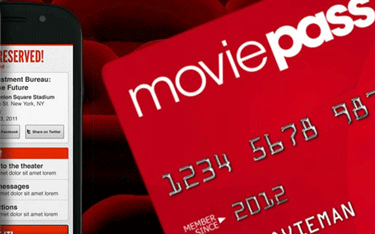Despite story after story about how badly the in-theater movie subscription service is performing, MoviePass has forever changed viewer behavior. Center director Jeffrey Cole explains.
______________________________
By Jeffrey Cole
When I wrote about MoviePass at the beginning of the year (first in January and then again in February), the company was largely flying under the media radar. In the past month, there has been an explosion of stories about the movie subscription service.
 It has been a soap opera: fans and skeptics alike want to see if MoviePass still works (it changes day to day). If it does, then what new restrictions are being placed on its use? How long will fans continue to support the service with all the new limitations? Will cash flow be sufficient to keep MoviePass alive until it finds the correct formula — giving subscribers access to the movies they wanted to see while still making business sense?
It has been a soap opera: fans and skeptics alike want to see if MoviePass still works (it changes day to day). If it does, then what new restrictions are being placed on its use? How long will fans continue to support the service with all the new limitations? Will cash flow be sufficient to keep MoviePass alive until it finds the correct formula — giving subscribers access to the movies they wanted to see while still making business sense?
As I detailed in the earlier columns, MoviePass has never made business sense. I outlined my own moviegoing last December in New York, when I saw 10 films at $16.29 each (and could have seen 31), only paying MoviePass $9.95. In that column, I showed that their argument — that the data they were collecting would cover the difference and generate a profit — was a fallacy.
The MoviePass plan was to gain subscribers fast and to use that clout to force theaters to share box office and concessions revenue. They also wanted to get promotional fees from the studios and some money for their data. MoviePass did the growth part superbly. Who wouldn’t want to see up to 30 movies a month at their favorite theater at any time they chose (the only restriction was no IMAX or 3D)? Within three months MoviePass had three million subscribers.
Two big things quickly went wrong for the company.
First, it became clear that the theaters would fight to the death to make sure MoviePass never saw a penny of their ticket sales or concessions. Early on, MoviePass took one main cinema in ten leading cities off the list of places to use the pass. This was a bald attempt to demonstrate the clout the new service had by sending subscribers to nearby theaters. They played hardball too soon and had to back down forever losing their influence with the theaters.
Second, MoviePass miscalculated the behavior of people who flocked to the service. The company’s fondest hope was that subscribers would see .5 to 1.5 movies month. They would make money off the subscribers who never actually got around to going to the theater.
_________________________________________________________________________________________________
MoviePass reignited a dormant desire to see lots of movies in the theater. Not having to spend a small fortune on every film made couples and families willing to take a chance on smaller films. And with MoviePass, documentaries have had a renaissance. MoviePass made inactive movie fans leave their homes and go to movies. It was so successful that AMC and Regal have now created subscription plans that in some ways are as good or better than MoviePass.
_________________________________________________________________________________________________
What MoviePass didn’t understand was that a movie a day for $9.95 each month was a clarion call to movie lovers — who were reluctant to spend $11 to 16 for a movie — to come out and see lots of movies. Like me back in December, they wanted to watch the Academy Awards ceremony* having seen all the nominated movies. It was the people who were already going to the movies who bought the pass and started going to even more movies.
MoviePass in its original form was always destined for failure. Now that they are offering three movies a month for $9.95 (if that change can last for more than two weeks, unlike their other changes), they may be able to right the ship and survive.
The Uber example
Whatever happens to MoviePass, it has won the war. MoviePass is the Uber of the entertainment industry.
Uber, which has turned transportation upside down by demonstrating a need for cars on demand through an electronic app, may not survive. The transportation analyst Hubert Horan has convincingly showed that Uber subsidizes up to 60 percent of every ride, and our work in the Future of Transportation project similarly shows that, like MoviePass, Uber is financially unsustainable without major changes such as driverless cars so they do not have to pay drivers.
Uber has become a verb for a new way of getting place to place. They likely will not be around to celebrate at the big party once all this is sorted out, but they have forever transformed transportation.
MoviePass reignited a dormant desire to see lots of movies in the theater. Not having to spend a small fortune on every film made couples and families willing to take a chance on smaller films. While fans have always been willing to spend big on Avengers or Star Wars films (well done, Disney, for buying Marvel and LucasFilm), with MoviePass, documentaries such as Won’t You Be My Neighbor, Three Identical Strangers, and RBG (Ruth Bader Ginsburg) have had a renaissance.
MoviePass made inactive movie fans leave their homes and go to movies. They touched a nerve that had been unexposed for a long time. It was so successful that AMC and Regal have now created subscription plans that in some ways are as good or better than MoviePass.
Seeing movies in the theater was in danger of withering into irrelevance. Each year, the number of tickets sold in America has continued to drop. To a family looking at a $100 expense (or more) of seeing a film in the theater, Netflix at $10 a month for lots of movies on a 55-inch screen was a more than reasonable alternative.
It is not too strong a statement to argue that MoviePass saved movies in the theater. It reawoke the legacy that fans had to see movies on a really big screen with an audience of fellow fans. Television, magazines, newspapers, and now music have all succeeded with their fans through subscriptions. Film was the last medium to serve up an all-you-can-eat model.
MoviePass has been a great boon to movie fans, theaters, and studios. It showed how much people love the movies.
The only losers have been the people who invested in MoviePass stock.
*A few of us still watch the Oscars telecast. In a future column I’ll look at the desperate decision to increase television ratings for the awards by creating an Oscar for best popular film
____________

Jeffrey Cole is the founder and director of The Center for the Digital Future at USC Annenberg.
See all columns from the Center.
August 15, 2018

